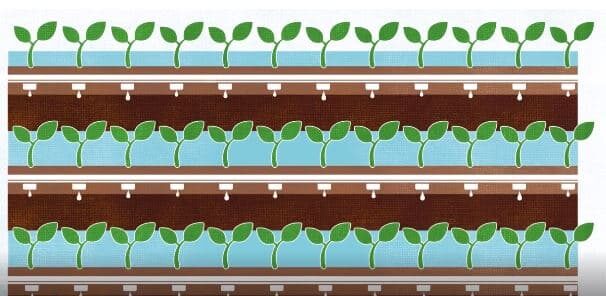An Israeli company Netafim introduced its landmark carbon credits initiative for global rice farmers with its pioneering drip irrigation technology at the COP27 summit.
Netafim is part of the global conglomerate Orbia and was the first to introduce drip irrigation in the ‘60s. The company says its precision agriculture technology can save water, boost crop yields, and reduce carbon emissions.
Netafim said it’s bringing its drip irrigation to Italy, Turkey, India, and other parts of Southeast Asia tod help farmers earn extra income from carbon credits.
Netafim President Gaby Miodownik said:
“This program marks the first time a carbon credit is being generated based on the application of irrigation technology. In the face of climate change, the only surefire route to sustainable agriculture is to grow more with less — less land, less water and significantly less greenhouse emissions.”
Netafim and Its Drip Irrigation Method
Traditionally, growing rice uses up to 40% of the world’s freshwater. It’s also responsible for 10% to 15% of all methane emissions from human activities.
When the world has to reach net zero emissions by 2050, there’ll be 20% less arable land per person to grow enough calories. The demand for rice will also increase by 28% by that period to feed 10 billion people living on earth, according to Netafim.
- Add to that the increasing water scarcity, and so it’s clear why efficient agricultural practice is a must.
This is where Netafim and its drip irrigation fits in, championing a precision agriculture technique.
Drip irrigation is one the most efficient water and nutrient delivery systems for growing crops. That’s because it delivers water and nutrients across the rice field in pipes called ‘dripperlines’. They have smaller units known as ‘drippers’.
Each dripper emits drops containing water and nutrients directly to each plant’s root zone, in the right amounts and at the right time. Each crop gets exactly what it needs and when to grow optimally.
- By introducing its pioneering drip irrigation system for rice production, Netafim said it can save 70% of the water used in producing rice.
According to the company, the traditional method of rice irrigation requires about 5,000 liters or 1,320 gallons of water per kilo of rice produced. But with drip irrigation technique, only 1,500 liters or 396 gallons of water is needed.
Plus, Netafim’s method uses 36% less energy and 30% less fertilizer. It also cuts methane emissions to almost zero and arsenic uptake by 90%.
But there’s a catch – the drip equipment will be costly for poor farmers. And it may not be an option if water is cheap and abundant.
But that could change with Netafim’s novel carbon credit program.
Carbon Credits from Drip Irrigation
The firm’s new initiative can enable rice farmers to afford the system. And that’s through the cash from carbon credits its drip irrigation generates.
Carbon credits are tradable permits produced from reducing or removing gasses like CO2 and methane. These credits allow companies to offset and lower their emissions which are hard to fully avoid.
Netafim works with researchers who put flux chambers into the rice fields. These devices measure emissions from the ground to the atmosphere in real-time.
The company also has verifiers to validate that the measurement is done properly. The data is further validated by Verra, one of the top carbon credit verifiers. It checks that the method used to sequester carbon follows international standards.
Miodownik noted that:
“If just 10% of paddy rice farmers switch to drip, the drop in emissions will be equal to taking 40 million cars off the road.”
Rice growers using Netafim’s drip lines can earn 10 carbon credits per hectare of land each year.
Given the current prices for each tonne of carbon or its equivalent, running between $20 – $30, it will be another income for many small farmers.
Pre-selling of Carbon Credits
Netafim will see that rice growers adhere to its drip irrigation procedures. Then it will submit the data for verification to Verra, who will issue the carbon credits.
- Once those credits are bought, the firm will pay the farmers what is due to them.
But there’s one big problem, especially in developing countries. Farmers have to buy the drip equipment upfront, but the carbon credits will be paid later at the end of the rice season.
So Netafim is looking for those willing to pre-purchase the credits to help farmers access the capital they need. It’s also exploring other models for managing carbon credits and payments.
The cash incentive that the credits represent is a game changer. It’s a “win-win for the farmers, the buyers of carbon credits, and the environment.”
Netafim’s carbon credits program and drip irrigation system will be available to farmers worldwide in 2023.


